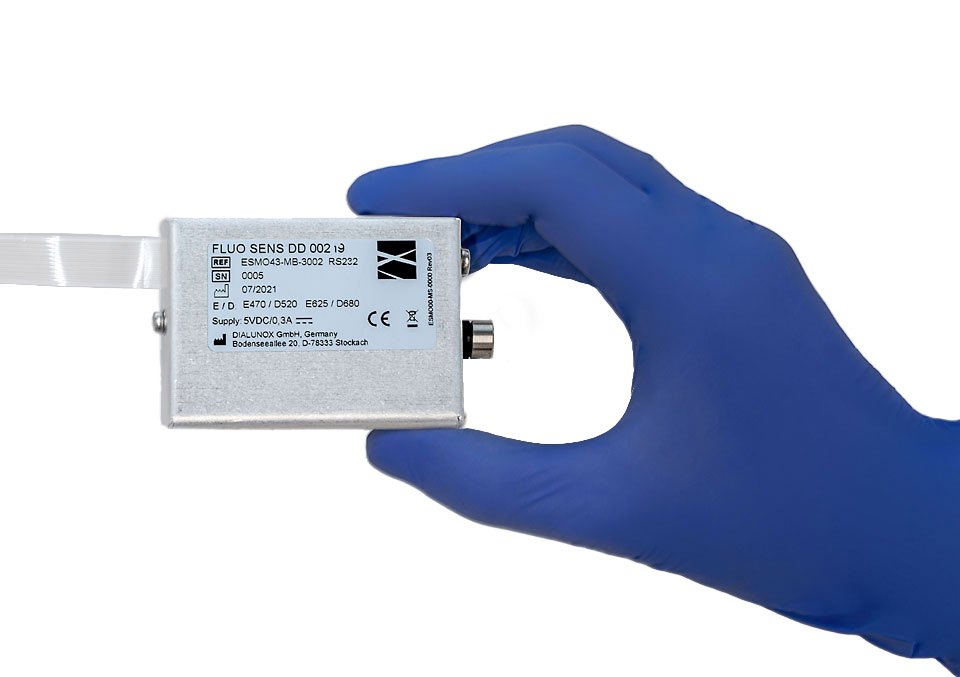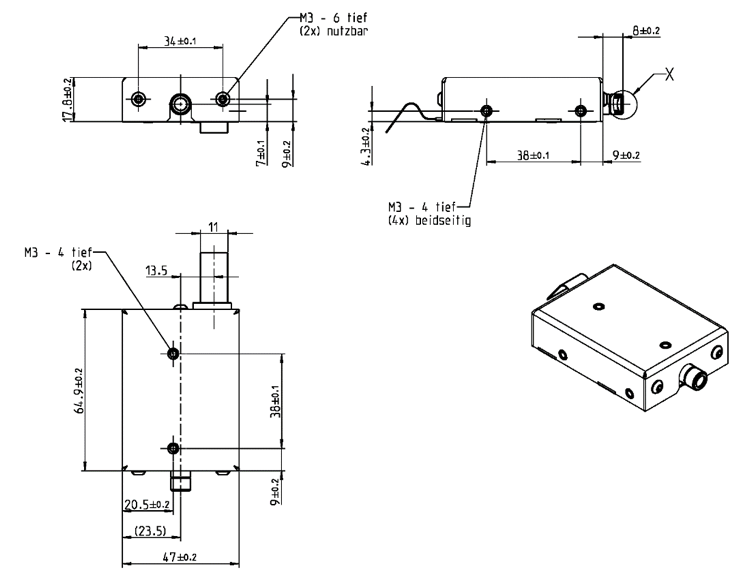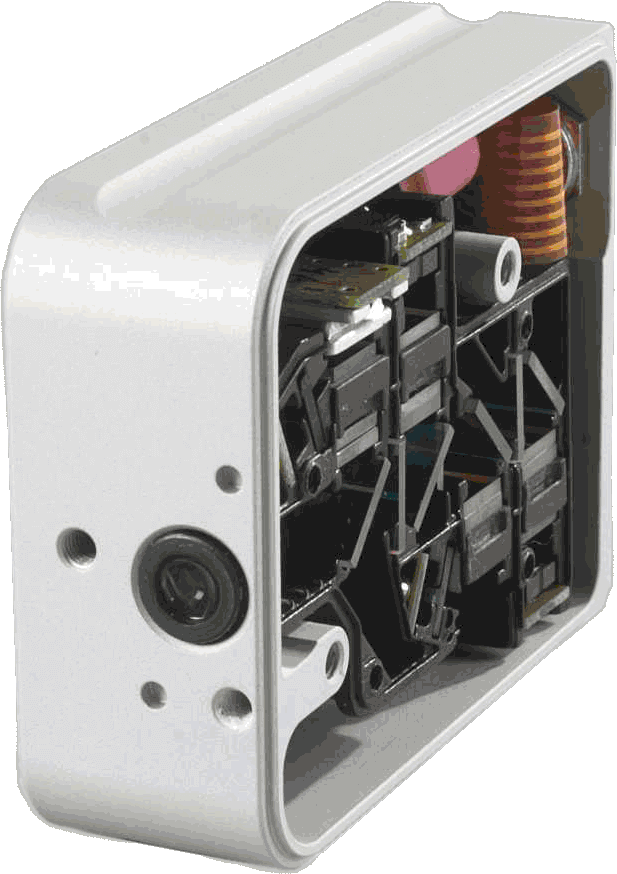Based on DIALUNOX’s unique technology, the confocal optics allow contact free measurements on surfaces and in liquids in the presence of ambient light. The highly sensitive detector measures fluorescent samples that are present in low concentrations and this unit is easy to integrate as a component into your instrument.
The compact and robust module contains a complete fluorescence measurement device comprising precise micro optics, powerful excitation light sources, highly sensitive sensors, and microprocessor controlled electronics. Calibration data and correction factors can be stored in the detector and applied directly to the raw data. Measurement results can be accessed via a simple serial interface. External devices such as personal computers, embedded controllers or program logic controllers (PLCs) can readily access measurement results via the integrated serial interface.





